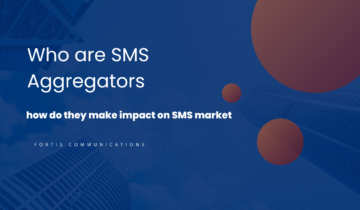Everything marketers need to know about OTT/ Over The Top.
OTT marketing affecting on lookalike industries via technologies.
What is the definition of OTT?
OTT stands for “Over The Top” and refers to any streaming service that delivers content over the internet. The service is delivered “over the top” of another platform, hence the moniker.
In previous years, a consumer would take out a cable subscription and their cable TV provider would be responsible for the supply and availability of programming. In the modern era, users can sign up for services like Netflix or Spotify and access their offerings over the internet. The cable provider now only provides the internet connection and has no ability to control what you consume. This separation has big implications for advertising.
Why is OTT important?
Because OTT is a relatively new phenomenon, there is a huge amount of growth potential. Lots of companies are entering the OTT space, leading to a wide variety of options for consumers, and increasing quantities of ad inventory for marketers. As more people cut the cord and move towards online-only media consumption, the way to reach these consumers will increasingly be via OTT services. How marketers can take advantage of these platforms remains, widely, to be seen.
What are the benefits of OTT marketing?
In legacy media ad buying, it can be hard to measure impact. As viewers move toward the OTT space, the ability to show them personalized ads and track click-through rate will mean marketers get the benefits of old media in terms of attractive packages of content — but with a very modern ability to quantify impact and leverage measurement.
The largest OTT providers
The type of OTT service most users probably interact with most regularly is video OTT. Services like Netflix, Hulu or Disney+HotStar are video OTT services, which provide users with a number of programming options, both in terms of a licensed library of TV shows and films, as well as original programming.
Another major OTT market is audio, with services such as Spotify now almost synonymous with music streaming. Users can access a massive library of recording artists and podcasts via an internet connection.
Remember text messages? Most users now use OTT messaging services like WhatsApp, Telegram or Signal, which allow them to use their internet connection to share information.
Similarly, voice OTT services, like Skype or WhatsApp, are increasingly common instead of phone calls.
What is OTT marketing?
Many OTT services operate on a paid subscription basis, but a large number also run advertisements — or offer tiered packages that allow users to either pay for ad-free experiences. OTT marketing is much like legacy media advertising, usually taking place between songs or episodes, but it is delivered through the streaming media on OTT platforms.
There are two main types of OTT marketing set-ups, client-side and service-side.
In a client-side setup, the viewport for the streaming media loads the ad before the episode or film is shown. In a server-side ad insertion, the ad is integrated seamlessly into the frames of the media, meaning it is not possible to ad-block. However, it is a much more technically challenging proposition to support server-side ad insertion, so it is still relatively uncommon.
Source: https://www.adjust.com/glossary/ott-over-the-top/#what-is-ott-marketing





